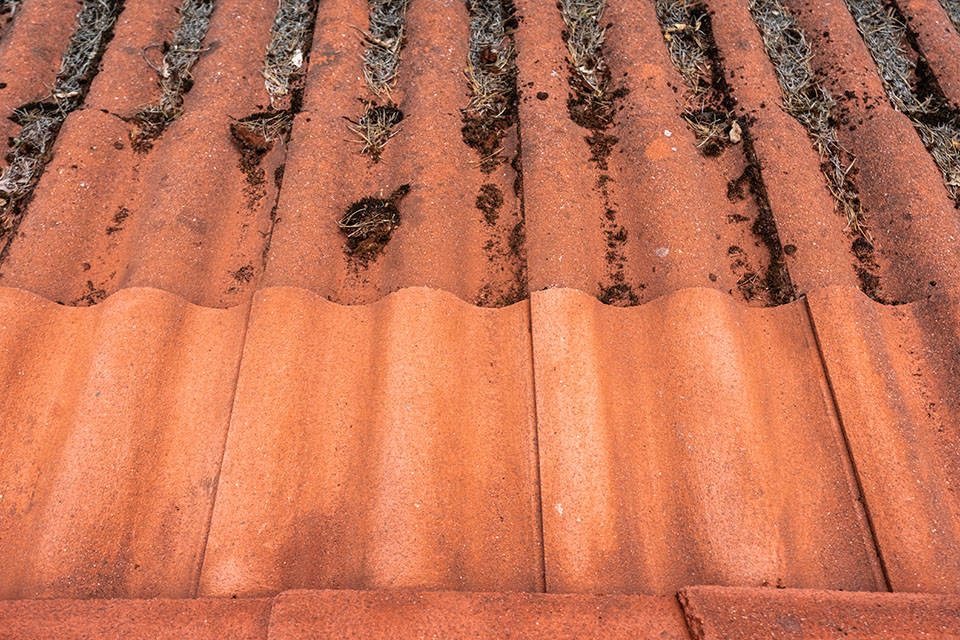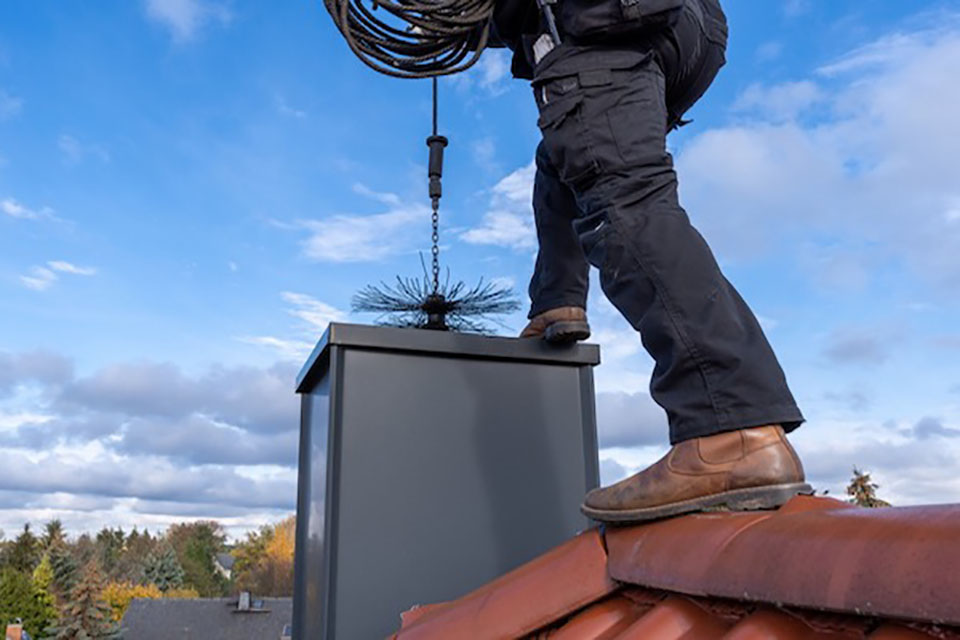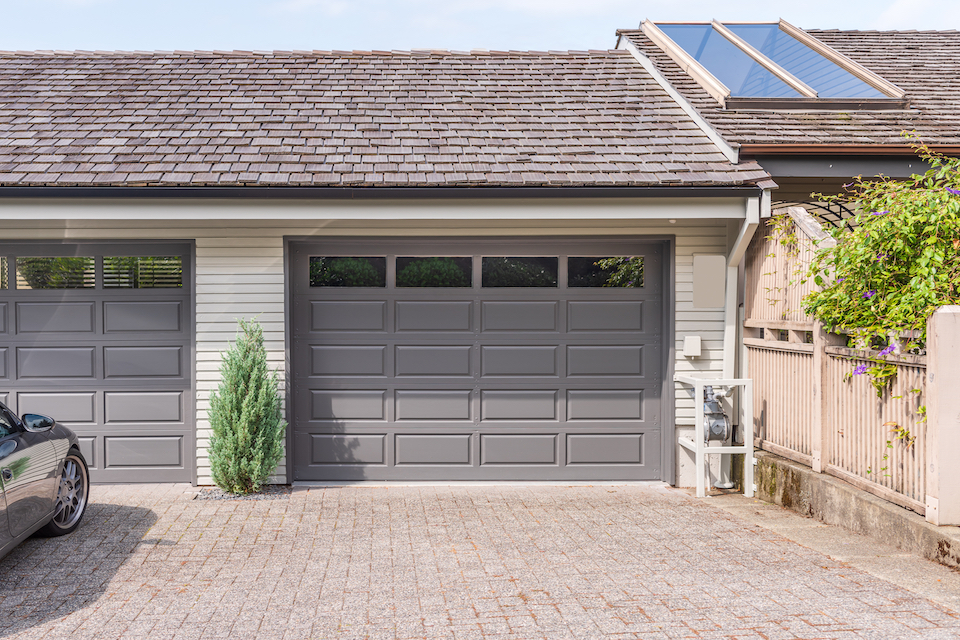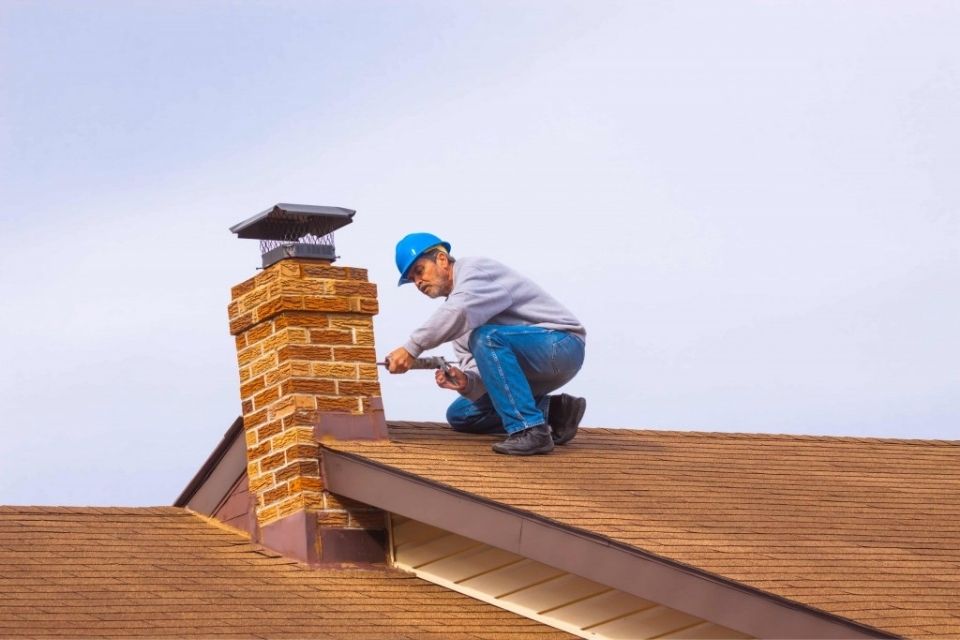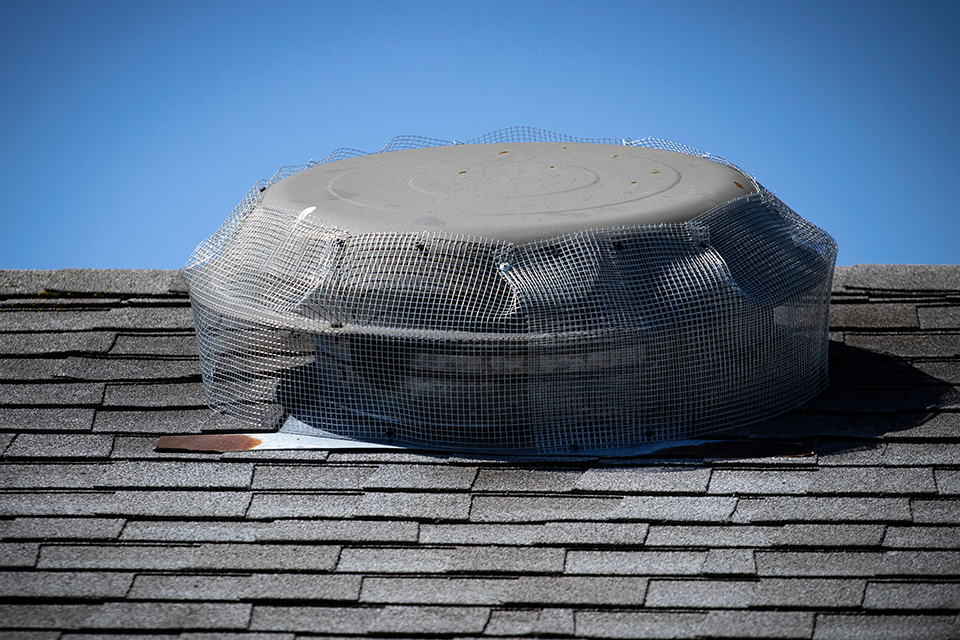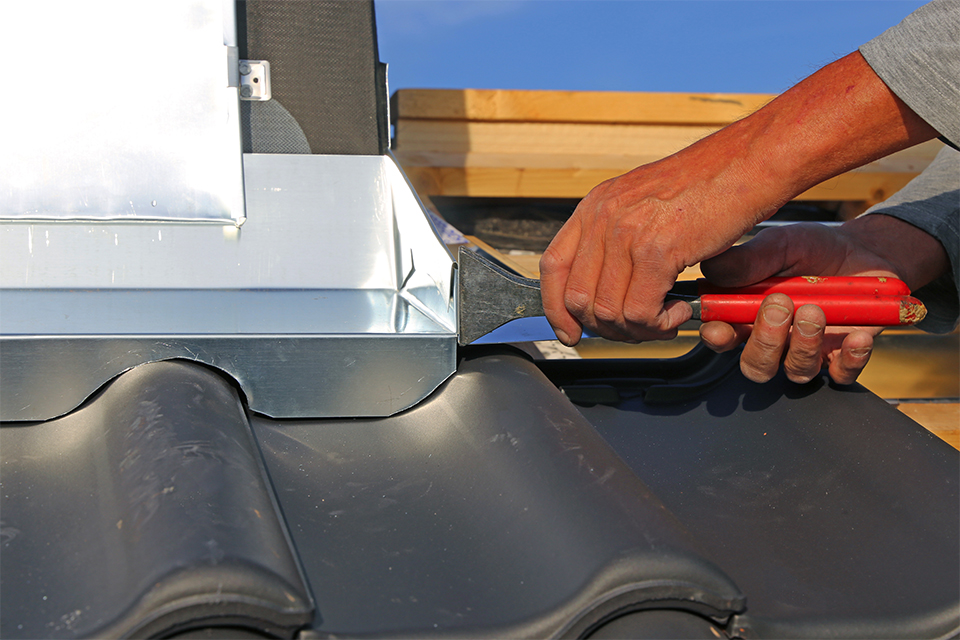How Much is Roof Cleaning?
The average cost for cleaning a roof is between £8-£12 per square metre.
So what do you get for your money? Let's find out what's included...
First off is the labour required to do the work, then equipment, materials and any safety equipment needed to access the roof, such as scaffolding.
Roof cleaning costs will also be determined by the size and type of the roof, the number of people conducting the work, how easy or difficult access to the roof is and finally, your location within the UK.
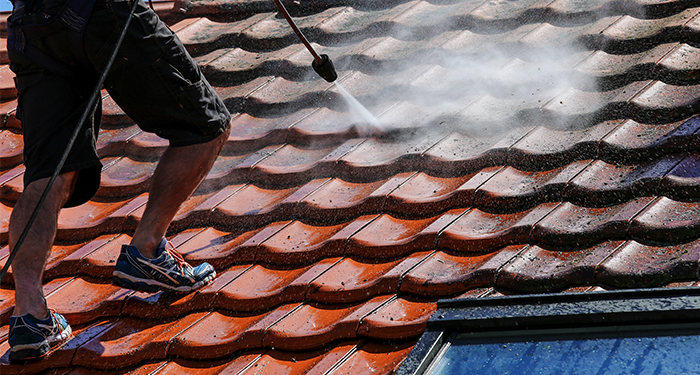
Are there any other things to consider?
The overall square meterage of the roof will affect the price you pay to have your roof cleaned. The larger the area to be covered, the longer the work will take, and the more materials will be used.
In order to help give you an idea of cost, any prices listed are based on the following sized properties, unless mentioned otherwise:
- Terraced Roof - 50-60 square metres
- Semi-Detached Roof - 65-75 square metres
- Average Fully-Detached Roof - 100-115 square metres
Of course, this all depends also on the roof style. Gable and hipped roofs should be relatively straightforward to clean, but a mansard or gambrel roof will require more work due to their shape.
How much you pay for your roof cleaning will also depend on how many people are needed to do the job properly and safely. The labour cost will be reflected in how many tradespeople are needed to clean your roof.
Larger roofs may require two people to complete the work in a reasonable time, while one person can typically do smaller roof areas.
What about the location of your home?
Your location in the UK will be a factor in the roof cleaning prices you will be quoted. This service in London and the southeast will be higher than in other parts of the country due to the higher business costs such as insurance and business premises.
The north of England, Midlands and some rural areas of Wales and Scotland will be cheaper, although roof cleaning prices can still be higher in some large cities.
It's a good idea to get three or four quotations from local roof cleaning companies to get an idea of the average cost.
Roof Cleaning Price List
| Property Type | Roof Size | Average Cost |
|---|---|---|
| Terraced house | 50-60 sqm | £500-£600 |
| Semi-detached | 65-75 sqm | £650-£750 |
| Average detached house | 100-115 sqm | £1000-£1610 |
| Large detached house | 115-130 sqm | £1150-£1470 |
What Factors Impact Roof Cleaning Costs?
When trying to establish the cost of roof cleaning, there are some considerations that you need to bear in mind with budgeting for this work.
Minimum Fee
Some companies may have a minimum fee for cleaning a roof. This is to cover the cost of any roof cleaning equipment, labour, and other expenses such as fuel, insurance, etc..… Any quotations should clearly state if there is a minimum fee applied.
Excess Mileage Charges
Where possible, it is wise to use a local roof cleaning company as hiring a contractor from outside your area may incur excess mileage and travel charges.
Unfortunately, if your property is remote, then these charges may be unavoidable and will need to be factored into your budget.
Size of Roof
Perhaps the biggest determining factor when budgeting for a roof clean is the size of the roof. The larger the area to be cleaned, the longer it will take, therefore more labour and higher material costs.
Roof Style
Other considerations are the shape and style of the roof. Mansard roofs or those with dormer roofs may incur extra costs associated with their design.
A large expanse of the roof will typically be quicker to clean without repositioning roof cleaning equipment, while some roof styles will require readjustment and moving around the roof more to reach all areas.
Type of Roofing Cleaning
The type of cleaning done will determine how long the work takes and therefore will also affect the price. Using roof cleaning equipment means an average roof will be done in 1-2 days, while scraping manually can take 2-3 days.
Scaffolding & Other Access Methods
When getting quotations for roof cleaning, you should note the method of access that the company or contractor plans to use. If they suggest ladders, this is a company to be wary of for safety reasons.
Walking on a roof, even with the aid of a roofing ladder often results in broken tiles, which will need to be replaced, adding to your costs. Not only that, but it can become dangerous, especially when the tiles are wet during the cleaning process.
Scaffolding, a scaffold tower or (in the case of larger companies) a cherry picker, are all much more professional and safer options than purely using a ladder.
The shape and style of the building may also determine which access method is used, and this choice will be reflected in the quote for any proposed roof cleaning costs.
Timeline
The amount of time that the clean roof takes will be a cost factor. This may be due to the size of the roof area or because of the style of the roof, but the longer the work takes, the higher the cost in terms of labour and materials.
Property Location
The area that you live in will affect the cost of roof cleaning. London has higher business costs in terms of insurance and business premises, so prices in the capital will always be higher than other parts of the UK.
On average, labour costs for roofing cleaning are around £8-£12 per square metre.
Types of Roof Cleaning
There are many ways of cleaning a roof, and some companies may specialise in one method or offer assorted options at different prices.
Whichever method you decide to use for your roof, it is wise to get at least three quotations so you can determine what the average price for your area and the size of the roof is.
Soft Washing
This method of roof cleaning involves the use of a biocide to kill the growth of any plant life on your roofs, such as moss, lichen, or algae.
It is often used in conjunction with scraping, which involves physically removing the moss or lichen from the roof tiles and then washing the roof area with a biocide.
Pros
- The chemical is left on the roof and is activated every time it rains. This provides ongoing protection and maintenance of the roof surface.
- This method does not involve large volumes of water delivered at high pressure, which can potentially cause damage to the roof.
- Biocides used in soft washing will remove black algae, which pressure washing does not remove.
Cons
- The process can be slower than using a pressure washer or steam cleaner.
- It is a more labour intensive job with hand tools often employed to scape the moss from the roof surface.
- Some people may not be happy about using chemicals to clean their roofs.
Steam Cleaning
A similar process to pressure washing but with high-temperature cleaning rather than high pressure.
The steam is delivered at lower pressure but is effective at removing moss, lichen, and algae. It also reduces the regrowth of these plants in an environmentally safe way.
Pros
- Effectively removes plant growth and surface dirt, and debris from the roof surface.
- Does not require the use of chemicals.
- The steam is delivered at a lower pressure than a jet washer and is, therefore, less likely to damage tiles or slates.
Cons
- Professional equipment is needed for this method, and by definition, this will be more expensive than other roof cleaning techniques.
- Steam alone will not kill all the algae and lichen spores, and the process needs to be augmented with a biocide application to stop regrowth.
- Cleaning at high temperatures may not be suitable for some conservatory roof cleaning, especially those with uPVC frames.
Pressure Washing
To clean a roof with a pressure washer is a contentious practice, with many for and against arguments. Nevertheless, there are a lot of companies and businesses offering this service.
Most people are familiar with how effective pressure washers can be on driveways, brickwork, and paths but whether they are a suitable method for cleaning all types of roofing is not clear.
Pros
- This method is quick, and a terraced house roof can be cleaned in a matter of hours.
- Due to the speed of this technique, it is often cheaper than other more labour intensive roof cleaning methods.
- There are a lot of companies offering this service, so it is easy to get several quotes for your roof.
Cons
- The benefits of high pressure washing all types of roofing material are debatable within the industry.
- There is a greater potential for damage, particularly to slates, pointing and ridge tiles when using high-pressure cleaning.
- If done incorrectly, this method can allow water to ingress through the roof underneath the tiles.
Moss Scraping
This method of cleaning a roof is very labour intensive and will take longer to complete than using high-pressure washers or steam cleaning equipment.
A long-handled tool is used to scrape the moss off of the surface of the roof. It is usually followed by a biocide wash which remains on the roof and is activated every time it rains.
Pros
- Scraping the moss off the roof manually ensures that all of the plants are removed.
- There is no need for high-pressure water, which has the potential to cause damage or water ingress.
- This is a cleaner method of removing moss and lichen from your roof, causing less mess in the process.
Cons
- Scraping moss off the roof is labour intensive and will take a lot longer to clear the roof.
- It is not possible to scrape algae off of the surface of the roof, and this will need to be removed by applying a biocide.
- Direct access to the roof surface may be needed, and this could potentially cause damage to the roof tiles.
Additional Roof Cleaning Costs
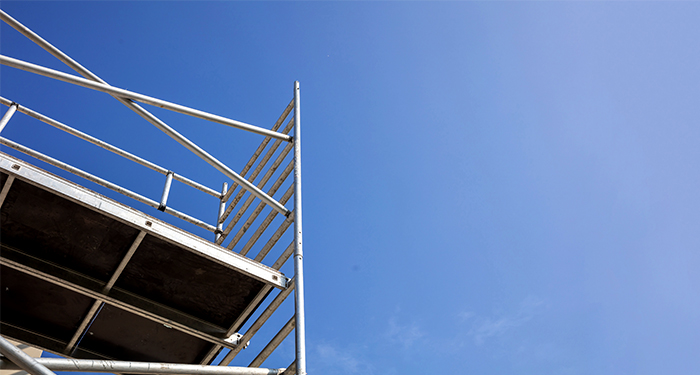
Cleaning roof tiles will improve the look of your property, but there are additional costs that can come with this work, as well as optional work to improve your home's appearance.
Removing the debris from the gutters and surrounding area is something to consider. Some companies will detach the gutters before cleaning roof tiles and reattach them once the work is completed.
While every precaution will be made not to cause additional mess, there's always a chance roof cleaning will have a knock on affect to other areas such as driveways and patios. As such, it's worth checking if the tradesmen you hire are able to do any additional jobs in the process.
Moss Removal and Treatment
Moss removal can be an additional cost if the company you hire have only provided a quote for surface cleaning. This could be the case if there is a significant build up of moss and likely to take longer than standard services cater for.
In the event preventive biocide treatments need to be applied, moss removal can cost an extra £50 to £200, or depending on the size of the roof potential more. This expense is worth investing in as it can not only kill moss, algae and lichen, but help reduce further build-up.
Gutter Cleaning
Once your roof has been cleaned, gutter cleaning is a natural job to add to the list. Ideally to be done at the same time, but if charged seperately will cost in the region of £75 to £125 for a terraced house, £100 to £150 for a semi-detached property, or £100 to £200 for a detached house.
This will then clear any excess leaves, moss and other debris that has built up over time. As if left unattended, a blocked gutter can cause excess water to run down the external walls of the property. If this occurs, there's an increased risk of mildew and mould both inside and out.
Chimney Sweeping
While checking the roof of your house, it can also be a good time to consider the cost of a chimney sweep (around £70 to £120).
If you have a fire or stove that burns fuel such as wood, coal or gas, it can create a build up of soot and creosote. While not all chimney sweeps access via the roof, those that do can also check for other potential concerns such as loose brickwork, repointing or any other chimney repairs.
Roof Tile Repair
If in the unfortunate event that during the course of cleaning roof tiles a company breaks one, then it will be necessary to repair or replace it.
Tile repair costs vary according to the type of tile, where the broken tile is located on the roof, and the area you live in.
The average cost to repair a broken roof tile is between £170-£500, while repairing a ridge can cost anything between £150-£600.
Window Cleaning
Following a roof clean by any method may result in your windows becoming splattered, and this can be an extra cost if you do not want to clean them yourself.
It shouldn’t be difficult to find a local company to get the cost of window cleaning, but it can range from £20-£50 for an average home with seven windows.
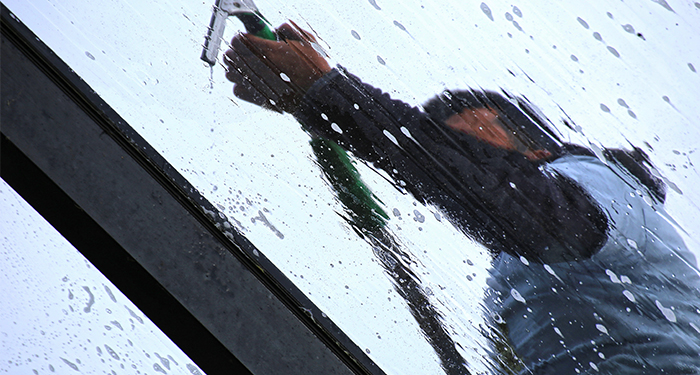
Guttering, Soffits & Fascia
Guttering that is in a good state of repair is essential for the maintenance of your home. If your guttering is in bad shape, then it is worth replacing as the potential for dampness getting into your home as a result is high.
While we've already covered gutter cleaning, if it's damaged or beyond repair then there are otherguttering costs to consider. The price of new guttering can range from £500 to £1500 depending on the material used and area covered.
Similarly, it is important that your soffits and fascia are in good condition, so if you clean your roof you discover that they need replacing, how much can you expect to pay?
Again, it depends on the material that it is made from, uPVC, timber or aluminium and the amount needed. Costs range from £5-£50 per linear metre for both soffit and fascia.
New Roof
A roof that is heavily covered in moss, algae, and lichen can hide a multitude of sins, and it may not be until it is cleaned that the roof's true condition can be revealed.
It may be that the roof is in an irreparable state, and it is necessary to install a new roof. It is difficult to give a definite cost of a new roof as sizes, styles, roof coverings and local pricing are so varied.
However, as a guide, you can expect to pay an average of around £7,000-£15,000.
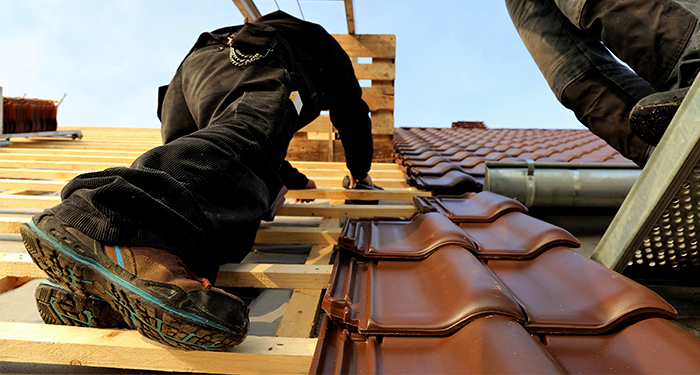
How Long Does It Take to Clean a Roof?
The length of time professional roof cleaning takes can depend on a number of factors. These include the size of roof, the extent of cleaning required and if special requirements are needed such as hiring scaffolding, a cherry picker or if just a ladder is sufficient.
As for the cleaning method, this too can impact how long the job will take, from a few hours pressure washing to days of manual scraping. Below is a summary of each based on four seperate sized houses for comparison.
If a cherry picker is used to access the roof, progress will be much quicker as the worker will be able to move around the roof area at the touch of a button.
Using a scaffold tower to reach various parts of the roof will require the tower to be shifted around the property to gain access which will inevitably be slower overall.
The amount of moss, lichen, algae, or dirt on the surface of the roof will also determine how long the roof cleaning will take. A heavily moss-covered roof will take time and care to clean as there may be unseen damage underneath.
A professional cleaning company will proceed with caution so as not to cause further damage.
Pressure Washing
| Property | Roof Size | Pressure Washing |
|---|---|---|
| Terraced house | 50-60 sqm | 4-5 hours |
| Semi-detached | 65-75 sqm | 1 day |
| Average detached house | 100-115 sqm | 1-2 days |
| Large detached house | 115-130 sqm | 2-3 days |
Soft Wash
| Property | Roof Size | Soft Wash |
|---|---|---|
| Terraced house | 50-60 sqm | 1 day |
| Semi-detached | 65-75 sqm | 2 days |
| Average detached house | 100-115 sqm | 2-3 days |
| Large detached house | 115-130 sqm | 3-5 days |
Steaming
| Property | Roof Size | Steam |
|---|---|---|
| Terraced house | 50-60 sqm | 6-8 hours |
| Semi-detached | 65-75 sqm | 1-2 days |
| Average detached house | 100-115 sqm | 2-3 days |
| Large detached house | 115-130 sqm | 3-4 days |
Scraping
| Property | Roof Size | Scraping |
|---|---|---|
| Terraced house | 50-60 sqm | 1-2 days |
| Semi-detached | 65-75 sqm | 2-3 days |
| Average detached house | 100-115 sqm | 3-4 days |
| Large detached house | 115-130 sqm | 3-5 days |
Roof Cleaning Benefits
The question can be asked, 'Is it worth cleaning a roof, as it is constructed to withstand the weather and elements of nature?’ Of course, the answer depends on your outlook and priorities, but there are benefits to cleaning a roof.
- Protecting the Roof - Removing moss reduces water retention and the risk of damage. When temperatures drop, trapped water freezes and expands, potentially dislodging tiles and causing other issues.
- Preventing Long Term Damage - Cleaning prevents structural damage and costly repairs to not only the roof but also the internal timbers. If algae and lichen isn't removed, this can also degrade roof tiles over time.
- Maintaining Gutters & Drainpipes - Prevents moss falling into gutters which can cause blockages, overflow, and damp. In freezing conditions, it can also expand and cause pipes and gutters to burst.
- Aesthetics - A clean roof looks newer and boosts kerb appeal, especially when selling. It also discourages birds and insects from nesting.
- Functionality - Moss and algae on conservatory roofs block light and warmth, reducing visual appeal and usability.
How Much Does DIY Roof Cleaning Cost?
If you wish to know the cost of cleaning your roof yourself, without labour fees, this would largely depend on the process used. However, in reality the majority of options aren't suited towards DIY, as such it's not a straightforward answer.
The first thing to consider is that working on a roof, especially a wet roof, is a very dangerous job and should only be done by a professional or those with the proper safety equipment.
Rather than just using a standard ladder, you would need to find a local scaffolding company or hire a cherry picker if you wanted to proceed with safety in mind.
Even if you have your own pressure washer for the garden, you may consider using it to clean your roof, but the majority of roofing professionals wouldn't recommend it. Likewise with a steam cleaner, as unlike professional equipment, they're not really designed for the job.
The only potential low-cost option is that of scraping the growth and debris from the surface of a roof. However, this will take a lot of manual effort and unlikely to have the same results without the benefit of using high-pressure equipment or suitable chemicals.
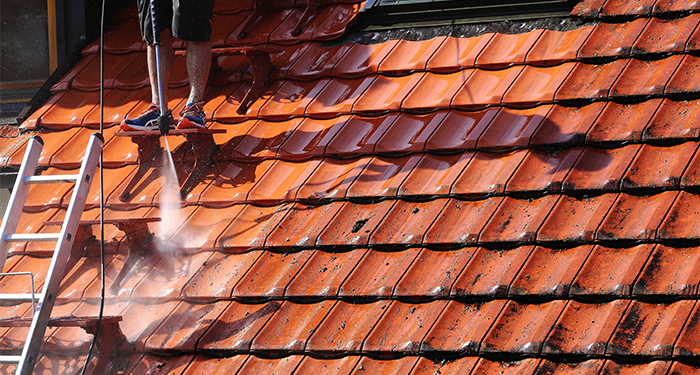
FAQs
Q: How often should you clean a roof?
A: This may depend on the environment the house is situated in. Some roofs will be more affected by moss than others if they are in shady, damp locations, while other roofs may be prone to black algae or lichen.
In these cases, a roof may need to be cleaned once a year while other less affected roofs could be cleaned every two to three years.
Q: Is it ok to pressure wash a roof?
A: Many tile manufacturers do not recommend jet washing of roofs. This is because the high pressure of the water can strip away the protective coating on the exterior of the tiles.
It can also damage or dislodge tiles. Pressure washing a roof is also extremely messy and typically only removes surface dirt and moss. Any algae growing on the tiles is not usually affected by high-pressure washing and requires a biocide cleaning agent to remove it.
Q: Can water get into the property during a roof clean?
A professional roof cleaning company will take precautions around roof light windows or during conservatory roof cleaning where potentially there could be water ingress.
Water should always be directed down the roof and not upwards where it could get underneath tiles or slates.
Q: What happens to my roof if I do not clean the moss off?
A: Moss typically grows and thrives in damp environments. As a living organism, if left in place, it will continue to grow and spread across the roof.
The moss absorbs moisture, and in freezing temperatures, it will expand. This can cause cracks in roof tiles, and leftover time can cause tiles to be damaged to the extent that they need to be replaced.
Q: What does soft washing a roof mean?
A: Soft washing means cleaning the roof without the use of a pressure washer instead of using chemicals and biocides to clean dirt, moss, and algae from the roof.
Some issues, such as black and red algae, do not respond to pressure washing and can only be removed with a proprietary chemical wash.

